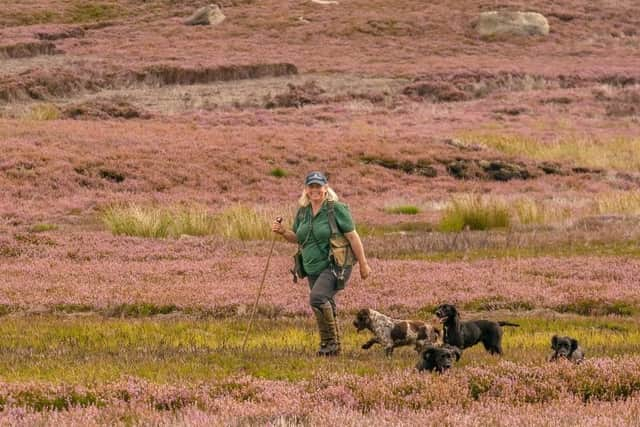Our moorlands do so much for wildlife and the environment - Tracy Johnson
The vibrant colours of summer, especially the brilliant purple of heather in bloom, have given way to the more subdued shades of autumn. Of course, look closely and you can see the dazzle of scarlet, greens and orange from rare mushrooms, toadstools and mosses.
All in all, our moorlands have a magic of their own. But apart from making our spirits soar, what do they actually do?
The answer is – a massive amount.


Advertisement
Hide AdAdvertisement
Hide AdIf the environment is what floats your boat then there’s an ocean of good to sail on. If wildlife is your passion, there’s something to love every step of the way.
All too often our moorlands are the subject of tension between competing interests. Should they be used just for recreation or agriculture; game management or rewilding; tree planting or species recovery? This can all get very intense. But if you step back from the fray for a moment, there is so much to celebrate. All these interests are and can be represented at the same time.
Our moorlands are playing a big part in tackling climate change. Nearly half of the UK’s carbon is locked up in peat soils, much of it in the varied habitat of the uplands, from blanket bog and wet peat to streams and pools, carpets of mosses, open grassland, woodland and rocky habitats.
Peatland restoration and protection is being undertaken every day to trap even more carbon. And those striking colours from mosses? That’s Sphagnum moss, regarded as the king of carbon capture.
Advertisement
Hide AdAdvertisement
Hide AdWell-cared for moorland is also doing its bit in ensuring that water quality is good, as so much of our drinking water comes from the uplands.
As for wildlife, we’re spoiled for choice in marvelling at the range of species that call the moorland home.
Some of our most at-risk birds are there for all to see. Lapwing, Golden Plover and Redshank are among the rare ground-nesting birds that favour the moorland habitat.
Winter visitors such as the Fieldfare and Redwing along with small flocks of Twite, Greenfinch, Goldfinch and Linnet can be seen feeding on the seeds of moorland plants now. My own favourite is the Curlew which, like so many other wader species, are doing well here on moors where their predators are managed. The adult birds return to breed at the same nesting sites as where they fledged themselves and it is a joy to see them returning year after year.
Advertisement
Hide AdAdvertisement
Hide AdAnd, of course, we should not forget the multitude of plants and bug life that adorn the landscape. There are 77 species of invertebrates which thrive in heather-dominated habitats, of which 32 species are known to depend on heather for their survival. The Emperor moth, Fox moth, True Lovers’ Knot moth and the Beautiful Yellow Underwing moth are among these glorious species – all important pollinators and a crucial part of the food chain. Other species that call the moors home include the Large Heath butterfly and the Silver-Studded Blue butterfly, as well as several species of bumblebee.
The majesty of the moors in autumn is certainly a sight to behold - and we can be inspired by what they do for nature and all of us.
Tracy Johnson is coordinator of the Nidderdale Moorland Group.